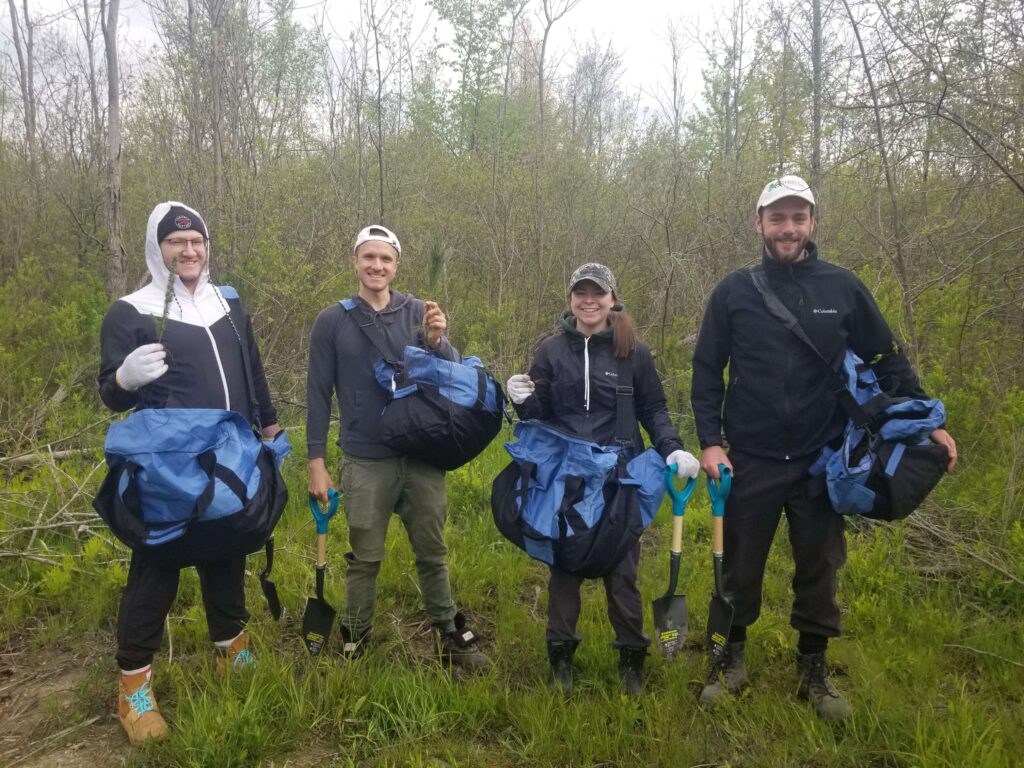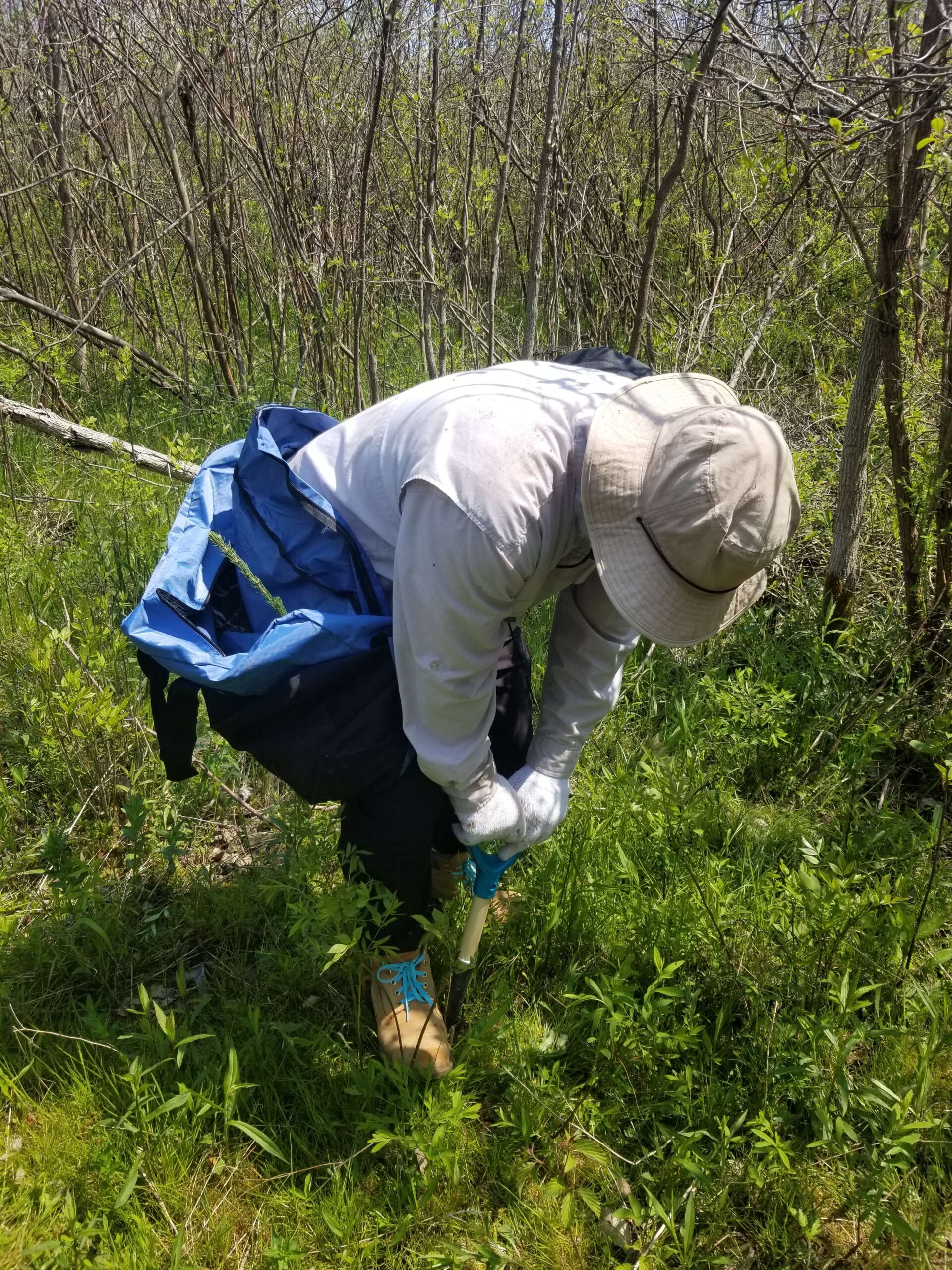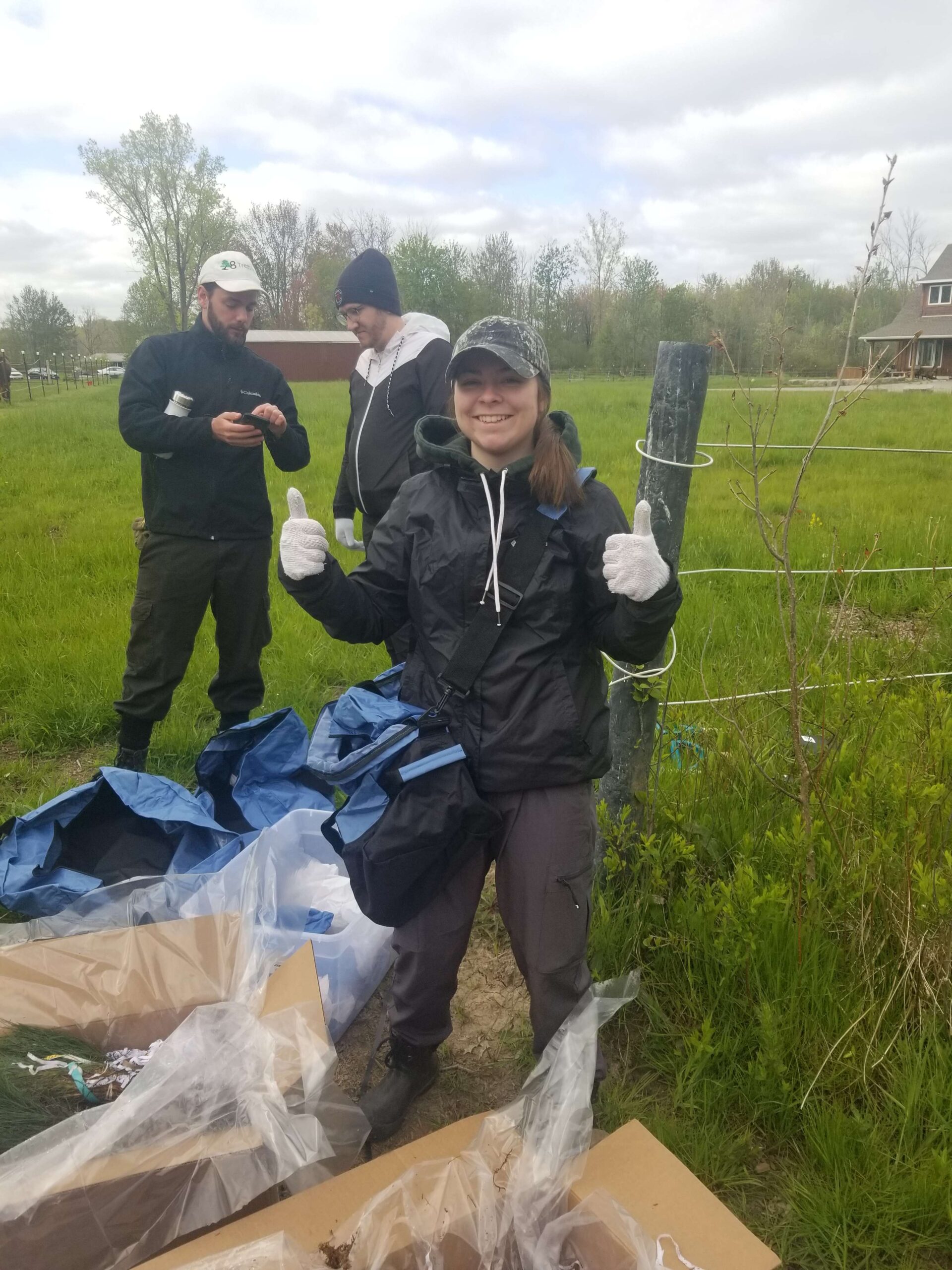Ontario Supports Environmental Action in Fort Erie to Continue Protecting and Restoring the Great Lakes .
Yesterday the team headed over to a project site in Fort Erie, ON of regenerated farmland, funded through the Great Lakes Local Action Fund. The Great Lakes Local Action Fund aims to build healthier communities while protecting and improving the health of the Great Lakes and their connecting waters.

The first step of the project was to plant 1000 trees of Spruce and Pine samplings to diversify the ecosystem on the regenerated farmland and combat the growth of invasive species, including Buckthorn. Regenerated farmland is a commonly occurring land condition across the Niagara Region. It is typically characterized by low species diversity, the presence of high numbers of invasive species, decreased soil quality, and drainage impacts.


The most concerning part of the degraded state of these lands is that they do not function properly. Most lands that are impacted by drainage create poor quality habitats called “ecological traps”. An ecological trap can be thought of as an “attractive sink”, which means the habitat attracts wildlife to use it because it offers food or resources for them at some point in time but drastically changes at other times , causing the wildlife using the habitat to perish. You can learn more about ecological traps here.
Later this summer, our team will begin Phase Two of the project by removing and treating invasive species and planting an additional 4,000 trees on the property to assist the re-establishment of the native biodiversity at this location. With careful monitoring afterwards, this restoration plan will ideally assist in the conversion of the regenerated farmland back to a wetland – its natural state many years ago.
- by Sharaya M & K Yagi, 8trees Staff
